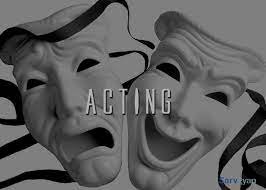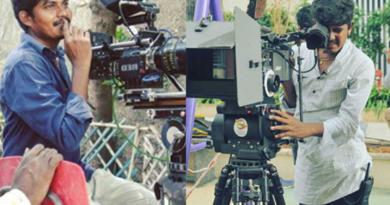What is 2D Animation? Difference Between 2D And 3D Animation
2D Animation:
2D animation is a type of animation that creates the illusion of motion through a series of sequential images or frames displayed in rapid succession. This type of animation is typically created using specialized software and can be used for a variety of purposes, including entertainment, education, advertising, and more.
The history of 2D animation dates back to the early 1900s, when animators first began experimenting with sequential drawings and flipbooks to create the illusion of movement. Over time, as technology improved and more sophisticated techniques were developed, 2D animation became increasingly popular and widely used.
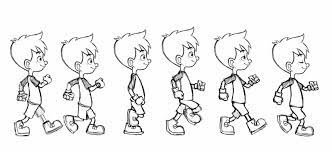
Today, 2D animation is used in a wide variety of applications, including feature films, television shows, video games, and more. It is often praised for its versatility and ability to convey complex ideas and emotions through simple images and movements.
One of the key features of 2D animation is its use of two-dimensional images and flat, often hand-drawn artwork. This is in contrast to 3D animation, which uses three-dimensional models and computer-generated graphics to create lifelike images and movements.
2D animation is a form of animation that involves creating images in a two-dimensional space. In 2D animation, characters, objects, and backgrounds are created and animated using a combination of hand-drawn and computer-generated techniques. 2D animation is one of the oldest forms of animation and has been used in many different applications, including television shows, movies, video games, and advertisements.
2D animation is created by breaking down the animation into a sequence of frames. Each frame represents a slightly different image or pose, and when these frames are played in quick succession, the illusion of movement is created. The process of creating these frames is known as animation, and it is usually done by skilled artists known as animators.
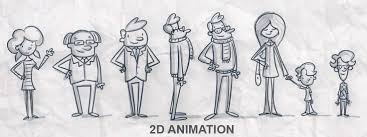
In traditional 2D animation, each frame is hand-drawn by an artist using pencil and paper. These drawings are then transferred onto transparent sheets of acetate called cels. The cels are then painted with colors and placed on top of each other to create the final image. The process of creating traditional 2D animation is very time-consuming and labor-intensive, but it can produce very high-quality and detailed images.
However, in recent years, advances in technology have made it possible to create 2D animation using computer software. Computer-generated 2D animation involves using software to create and manipulate images on a computer screen.
3D Animation:
3D animation is a technique used to create and manipulate three-dimensional computer-generated objects in a digital environment. It is used in various industries such as film, television, gaming, architecture, and advertising, to name a few. In this process, animators create digital models of objects or characters and then use specialized software to add movement, lighting, textures, and sound effects. The final result is a fully rendered animation that can be viewed from various angles, giving the illusion of a three-dimensional space.
Creating a 3D animation involves several steps, including modeling, texturing, rigging, animation, lighting, and rendering. Each step requires specialized skills and software to achieve the desired result.
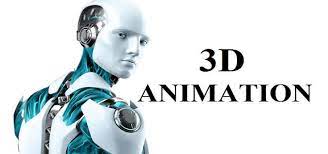
Modeling is the process of creating a 3D object or character using specialized software. Animators use polygons, curves, and surfaces to create the shape of the object or character. They can also add details such as texture, color, and lighting.
Texturing is the process of applying a texture to the 3D object or character. This gives it a more realistic appearance by adding details such as bumps, scratches, and other imperfections.
Rigging is the process of creating a skeletal structure for the 3D object or character. This allows animators to move the object or character in a natural way. The rig consists of bones that are connected to the model, and each bone has its own set of controls that can be used to move and pose the model.
Animation is the process of adding movement to the 3D object or character. This involves manipulating the rig controls to create natural-looking movement. Animators can create movements such as walking, running, jumping, and dancing, among others.
Lighting is the process of adding light sources to the 3D scene. This is used to create a realistic lighting environment for the 3D object or character. Animators can use different types of lights, such as directional lights, spotlights, and ambient lights, to create different lighting effects.

Rendering is the final step in the 3D animation process. This involves using specialized software to create a final image or sequence of images. The software uses complex algorithms to calculate the lighting, shadows, reflections, and other visual effects to create a final, photorealistic image.
There are various types of 3D animation, each with its own set of techniques and applications. Some of the most common types of 3D animation include:
- Character animation: This involves creating 3D models of characters and animating them to create lifelike movements and expressions.
- Product visualization: This involves creating 3D models of products to showcase them in a digital environment. This is often used in advertising and marketing.
- Architectural visualization: This involves creating 3D models of buildings and structures to showcase them in a digital environment. This is often used in architecture and real estate.
- Visual effects: This involves creating 3D models and animations to add special effects to films, television shows, and other media.
- Gaming: This involves creating 3D models and animations for use in video games.
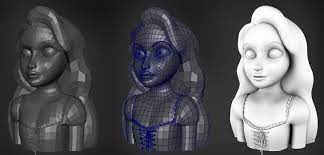
In conclusion, 3D animation is a complex process that involves multiple steps and specialized software. It is used in various industries to create lifelike, photorealistic images and animations of objects, characters, and environments. The use of 3D animation has revolutionized the way media is created and consumed, and it continues to evolve and improve with advancements in technology.





